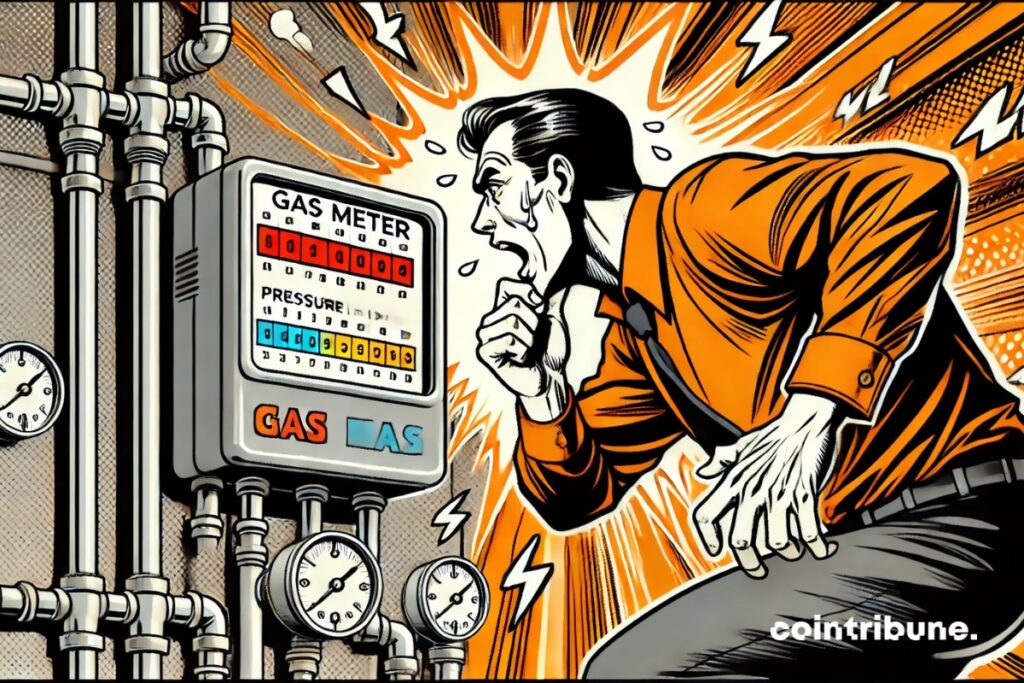Ethereum’s Fee Overhaul: Can Gas Reform Save the Flailing Giant?
Ethereum’s core devs are pushing a radical fee restructuring—just as network activity hits a 12-month low. The proposal aims to slash gas costs for developers while redistributing MEV profits (because nothing says ’decentralization’ like tweaking the money flow).
Key changes: Dynamic base fees now adjust hourly, and validators get capped tips—because apparently even blockchain needs a ’maximum wage’ now. Early tests show a 22% drop in average transaction costs... if you ignore the 300% surge during NFT drops.
Wall Street analysts are already calling it ’quantitative easing for nerds’—but with ETH still down 64% from its ATH, the community’s betting this Hail Mary pass might actually stick.

In Brief
- A new fee structure on Ethereum aims to support small developers and encourage application growth.
- Ethereum seeks to strengthen its attractiveness amid the rise of Solana.
- Increased activity on the Ethereum network could revive ETH demand and restore investor confidence.
- Adopting this reform could mark a strategic turning point for ETH’s economic future.
Ethereum: a new fee proposal to support application developers
Unveiled on April 27, Kevin Owocki and Devansh Mehta’s proposal for Ethereum is based on a simple equation using the square root function. The principle? The more funding a project receives, the lower the percentage of fees.
For example, for a fund of $170,000, the fees would be 7% (i.e. $13,038). But once a project exceeds $10 million in capital, the fees would be capped at only 1%. This mechanism aims to encourage the growth of ETH while protecting small decentralized app creators from excessive costs.
This initiative comes at a difficult time for Ethereum. In 2024, the Solana blockchain recruited more developers (7,625) than Ethereum (6,456), challenging its historical dominance in the crypto sector. Added to this is a significant drop in fees on Ethereum, which reached their lowest level in five years in April 2025, according to Santiment. This decline is linked to the downturn in DeFi activities and the loss of momentum in the base layer.
Result: many institutional investors are reducing their exposure to Ether (ETH), whose price is around $1,792. Without a clear catalyst to reverse the trend, Ethereum must urgently find solutions to stay competitive against more agile networks.
Future Prospects
With this proposal from Kevin Owocki and Devansh Mehta, Ethereum attempts to address economic challenges and maintain its leadership in the crypto universe. The success of this reform could well determine the future of its application ecosystem.
If the proposal is approved, it could revitalize the Ethereum ecosystem by attracting more developers and stimulating the creation of decentralized applications. This momentum could increase network activity, generate more transactions, raise overall fees, and restore crypto investors’ interest. Ultimately, this could support ETH demand, strengthen its valuation, and reverse the current downward trend of ETH.
ETHUSD chart by TradingViewBy betting on a fairer fee structure, Ethereum hopes to revitalize its ecosystem and regain ground against competition. At the time when Ethereum fees have dropped by 90%, if the proposal is adopted, it could mark a decisive turning point for the network’s growth and the future valuation of ETH in the crypto world.
Maximize your Cointribune experience with our "Read to Earn" program! For every article you read, earn points and access exclusive rewards. Sign up now and start earning benefits.

